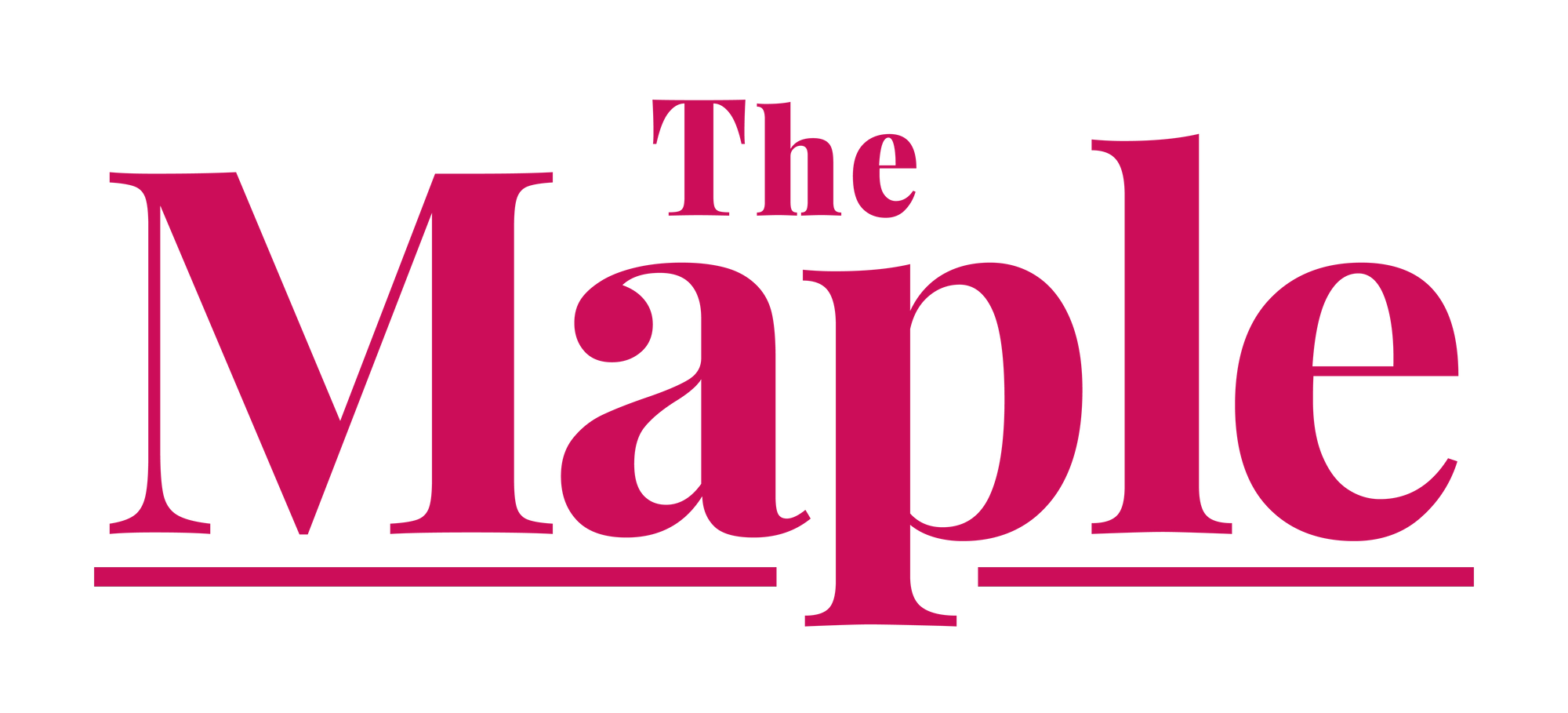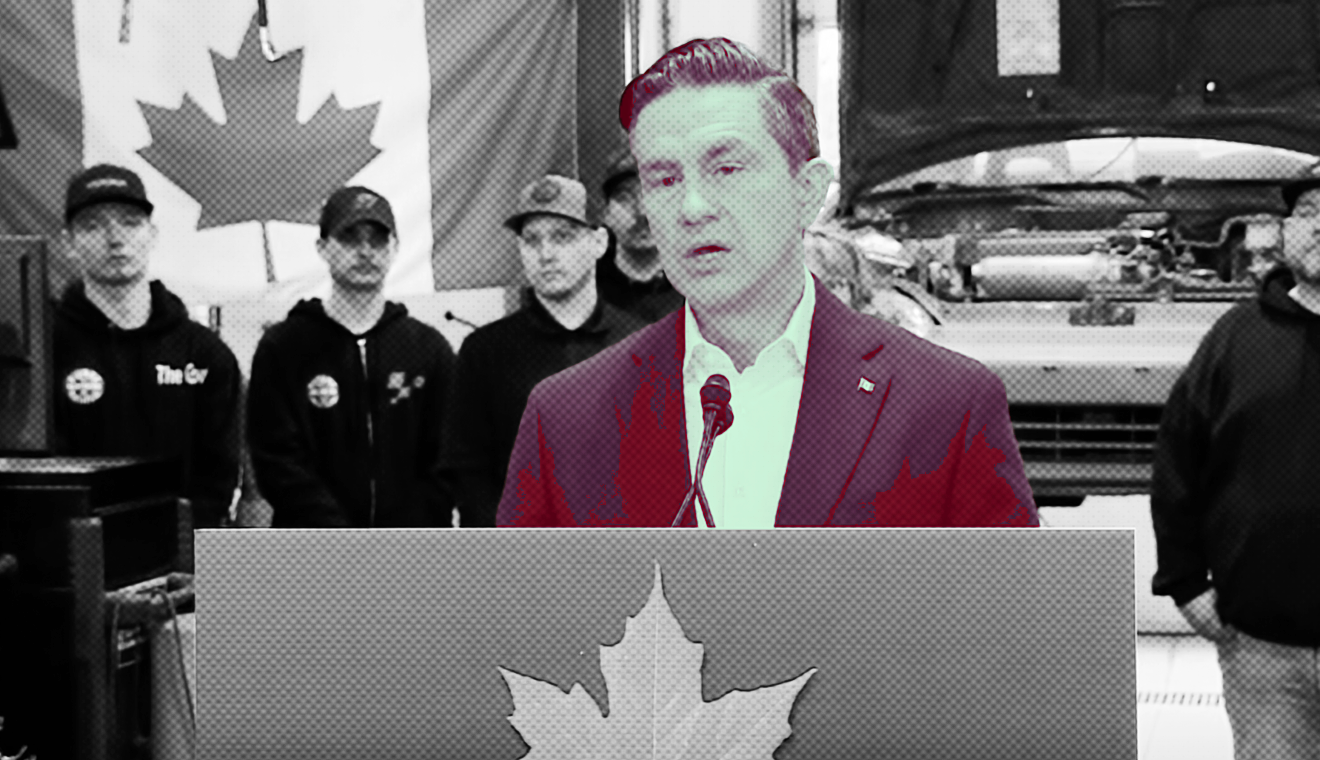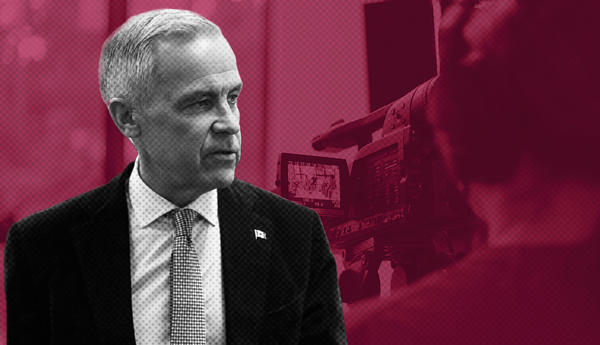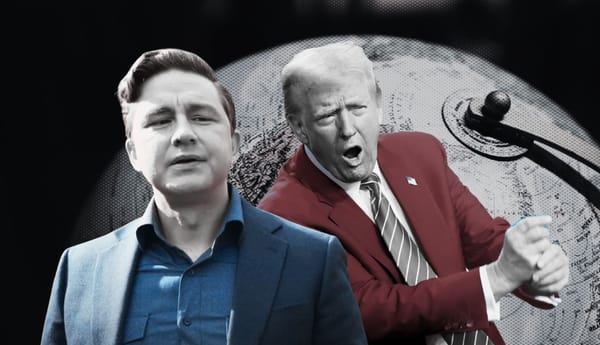Conservative Party Leader Pierre Poilievre is getting an easier ride at media events during the current election than Liberal Party Leader Mark Carney, an analysis by The Maple finds.
The data shows that despite Poilievre’s constant complaints that the media go easy on his Liberal opponents, the opposite is true in this election campaign.
The findings also show that the Conservative Party’s authoritarian treatment of the media — limiting the number of questions Poilievre is asked per day and handpicking which journalists are allowed to speak — is working to shield the leader from scrutiny.
Earlier this month, Hill Times journalist Stuart Benson reported that Poilievre had taken less than half the total number of questions fielded by Carney.
The Maple analyzed all questions posed to Poilievre and Carney by national anglophone media outlets at broadcasted campaign events between March 23 and April 9. Questions asked of Carney in his role as prime minister, unrelated to the election campaign, were excluded from The Maple’s analysis.
Poilievre took only 30 questions in English from national media outlets at his regular campaign press conferences during the 17-day period. By contrast, Carney answered more than three times as many questions at campaign events than his Conservative opponent.
The Maple sorted the questions into three categories. “Neutral” questions were those that sought information about a policy or what a candidate would hypothetically do to address a particular issue as prime minister.
“Critical” questions put the candidate on the defensive, asked him to respond to a specific criticism or challenged a previous statement. “Softball” questions were about personal views, or gave the candidate an opportunity to criticize his opponent.
Thirty-one per cent of the questions posed to Poilievre were critical and 69 per cent were neutral or softball.
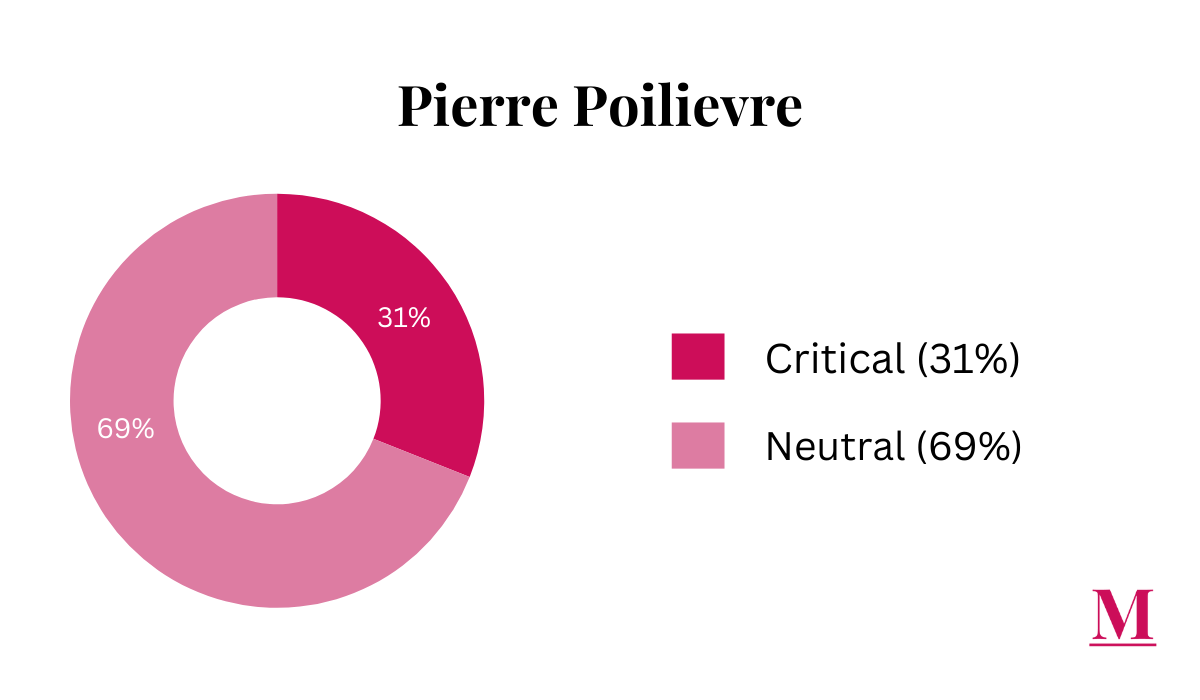
Critical questions posed to Poilievre included why Canadians should trust the Conservatives’ vetting process after the party dropped four candidates in two days, how he feels about receiving donations from “friends” of Indian prime minister and Hindu nationalist Narendra Modi, and whether he expects to reach new voters by railing against a “woke mob” and talking about destroying the CBC.
Of the questions posed to Carney, 44 were critical, and 56 were neutral or softball.
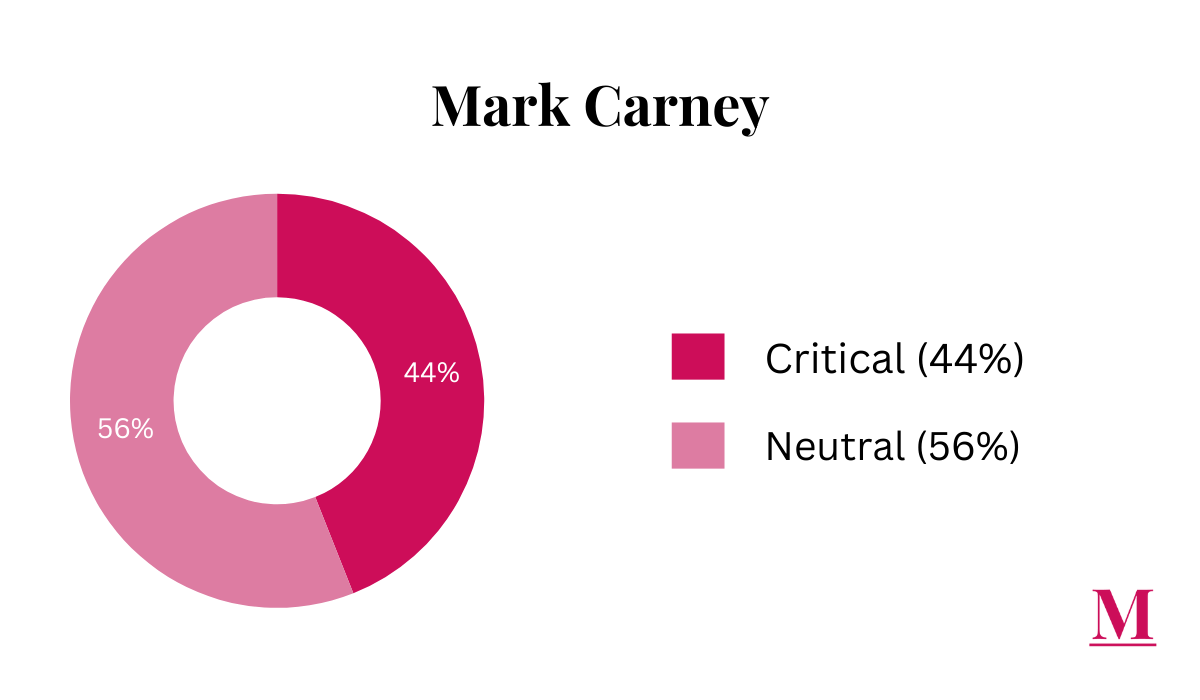
For example, Carney was panned by one reporter for his poor grasp of French, asked by the National Post about allegations he plagiarized parts of his doctoral thesis, and was grilled by several reporters after he initially refused to drop candidate Paul Chiang, who had made comments about a bounty being placed by Hong Kong police on a Conservative candidate’s head.
Other questions suggested that the Communist Party of China favours Carney in this election, and quizzed the Liberal leader about his time working for Brookfield Asset Management.
The two leaders’ responses to questions were also examined. Despite some testy interactions with reporters before and during the campaign trail, Carney tended to respond less aggressively to most questions than Poilievre.
Poilievre, on the other hand, responded with hostility to two critical questions and lashed out at a journalist in Sault Ste. Marie, Ontario, who hadn’t been given the microphone but shouted out her question anyway. The Conservative Party leader called her a “protester.”
“It’s a reporter trying to ask a legitimate question,” the journalist responded angrily.
The Conservative Party did not respond to written questions from The Maple.
Rachel Gilmore, an independent journalist who recently lost a recurring appearance on CTV Your Morning after a member of Poilievre’s staff complained, said she wasn’t surprised by The Maple’s findings.
The fact that Poilievre’s staff is cherry picking which journalists can ask questions means that anyone who asks a tough question probably won’t be called on again, she said.
“I can see people doing a bit of self-censorship and cost-benefit analysis. Is it worth asking the hard question today if it means I use that potential remaining amount of goodwill on this one question?”
She also said Poilievre’s team is taking a much more adversarial stance with journalists than his Conservative predecessors — and that’s dangerous both for individual journalists and press freedom.
After Gilmore reported on Poilievre leading a march of Freedom Convoy protesters in 2022, she was inundated with insulting and misogynistic harassment. Poilievre added to the pile-on by attacking her work in a press release.
“They’re clearly trying to use journalists for a viral moment that capitalizes on the anti-media, anti-institution sentiment that’s growing, particularly on the more populist right,” she said. “It’s contributing to an atmosphere where it’s dangerous to be a journalist.”
Gilmore, who has long been open about the online harassment and stalking she experiences, said there’s been a “massive uptick” in that kind of behaviour over the last few years.
“When you have political leaders participating in it rather than condemning it, that adds a layer of legitimacy to that harassment that makes it more dangerous to be a journalist.”
It becomes even worse when media organizations like CTV give into the pressure and punish journalists who have done nothing wrong, she said.
“That decision by CTV […] shows that if people online kick up a stink — no matter how bad faith it is — journalists will be punished for doing nothing wrong other than being disliked by loud voices on the internet. And that’s really dangerous for the freedom of the press.”
Trump Tactics?
Marc Edge — a journalist and instructor in media and communication at University Canada West in Vancouver — noted that Poilievre, a career politician, has a much longer political track record than Carney on which to be questioned by journalists.
“It seems that [the Conservatives are] following the same game plan that Trump did quite successfully in the U.S. when he attacked the ‘fake news media,’” Edge told The Maple.
However, Edge said, given the “existential threat” posed by Trump to Canada, Poilievre’s hostility toward the media is less likely to go over well with the Canadian public.
In particular, the CBC, which Poilievre has pledged to defund, has for many Canadians become a symbol of national culture and unity.
“I think unfortunately for Poilievre the events are working against him,” said Edge.
Edge added that there has been decades of evidence showing professional journalists tend to hold more small-l liberal beliefs than the general population.
“But professional values are supposed to negate any liberal bias on the part of journalists, and besides which, most media owners tend to be more conservative,” Edge explained, noting that Postmedia, Canada’s largest newspaper chain, is explicitly conservative in its editorial perspective.
A previous study by The Maple’s predecessor, Passage, showed that Canada’s largest newspapers, most of which are now owned by Postmedia, have largely endorsed conservative parties in federal elections since 1980.

Edge said that if Poilievre wins the election and follows through on his threats to defund the CBC and cancel federal news media subsidies, it would have a “devastating” impact on journalism in Canada.
Edge’s latest book, Tomorrow’s News: How To Fix Canada’s Media, looks at how other countries, including the Scandinavian nations, have subsidized news media.
“Part of the problem with the media now is that for lack of local coverage, there’s a fixation on national coverage,” he said.
Part of the Conservative Party’s purported justification for shutting out national media from travelling on its campaign plane this election is to provide more space for local reporters at media events.
Even if that claim is made in good faith, Edge said, the problem is that due to cutbacks, there aren’t enough local journalists left to fill the gap.
This is particularly true, Edge said, in the case of media corporations like Postmedia, which is majority-owned by an American hedge fund, and TorStar, which was taken over by a private investment firm in 2020.
“They’re simply cutting costs, and in the end, there’s going to be nothing left,” said Edge.
